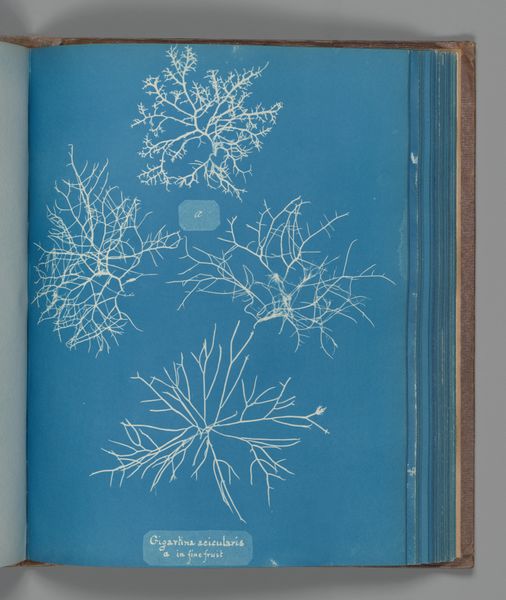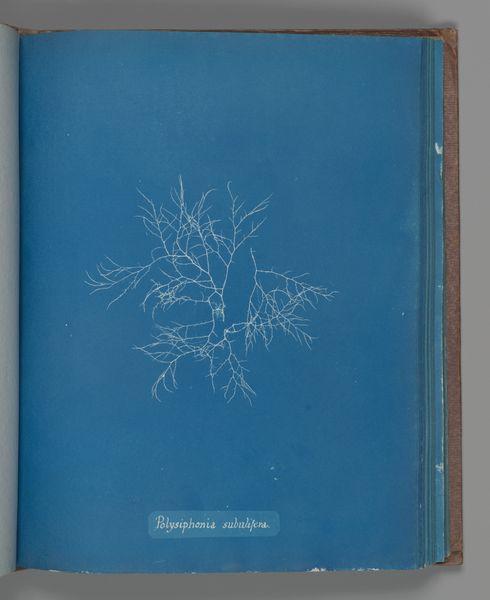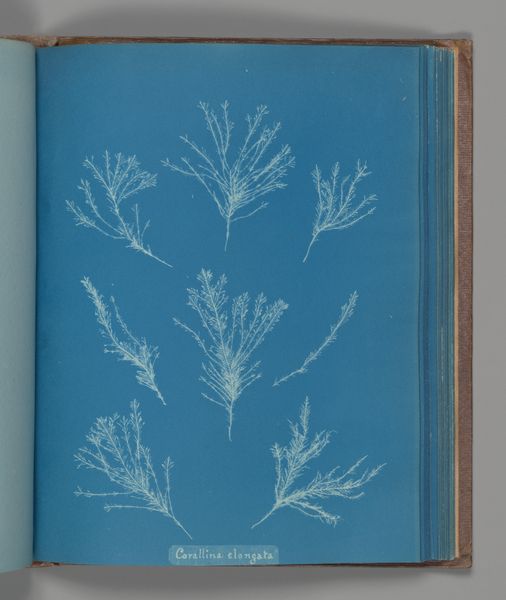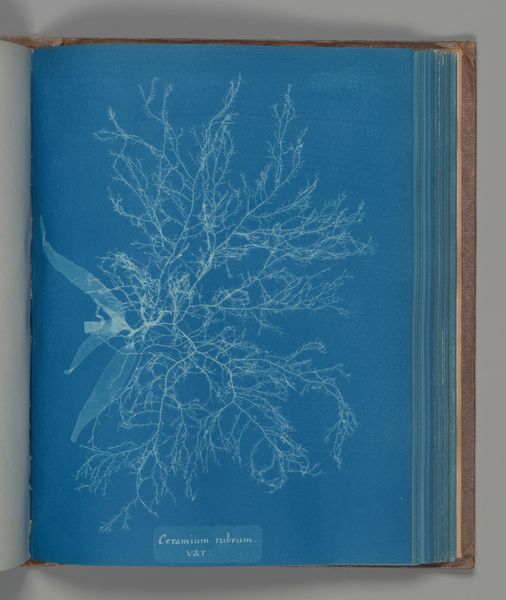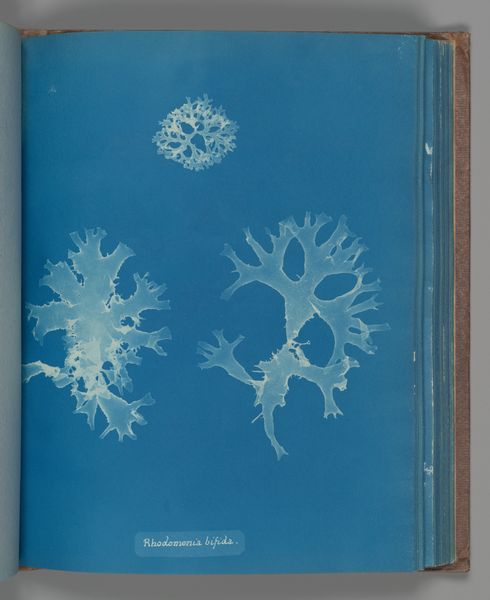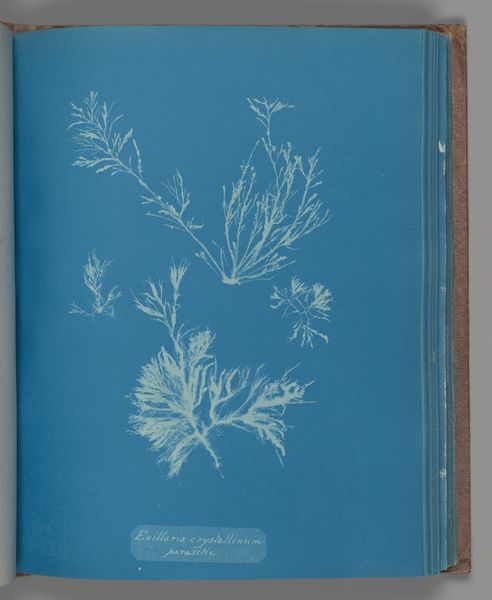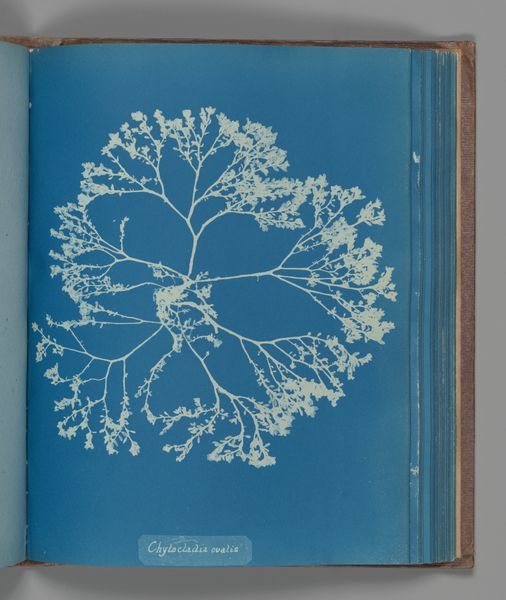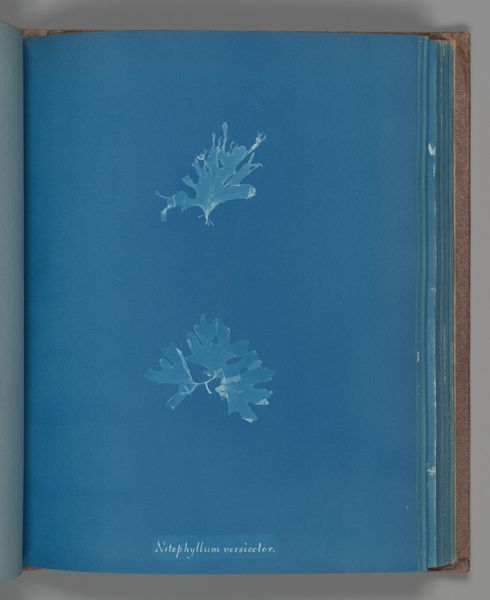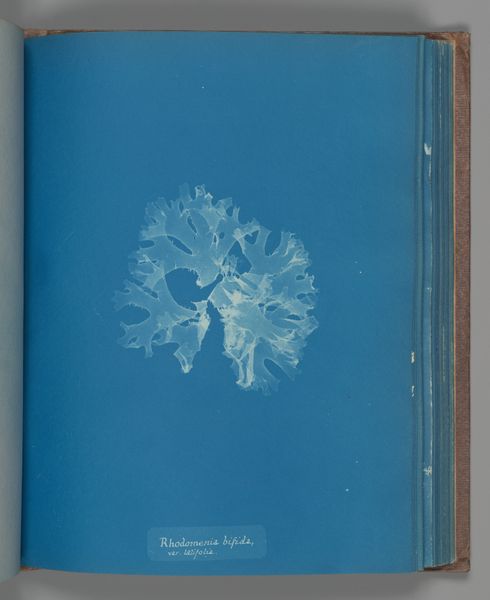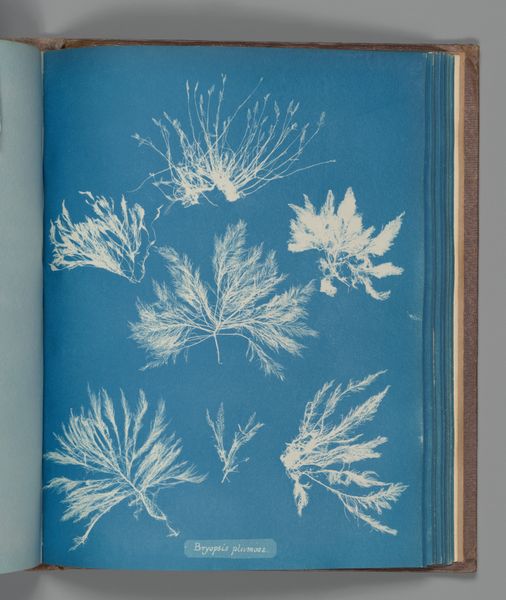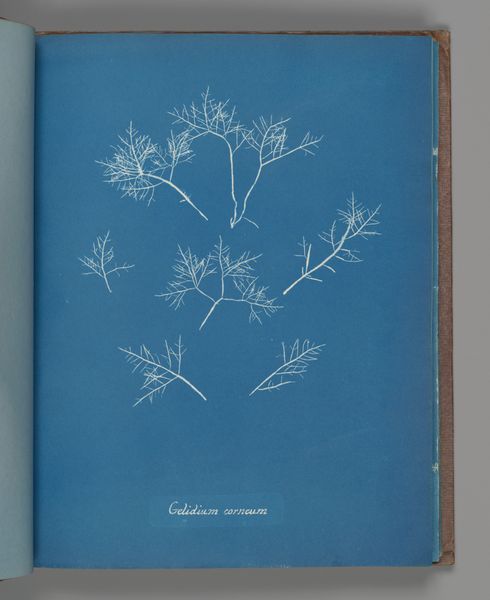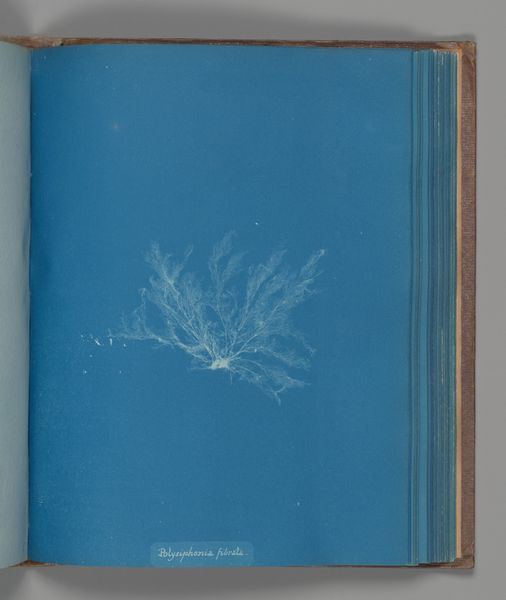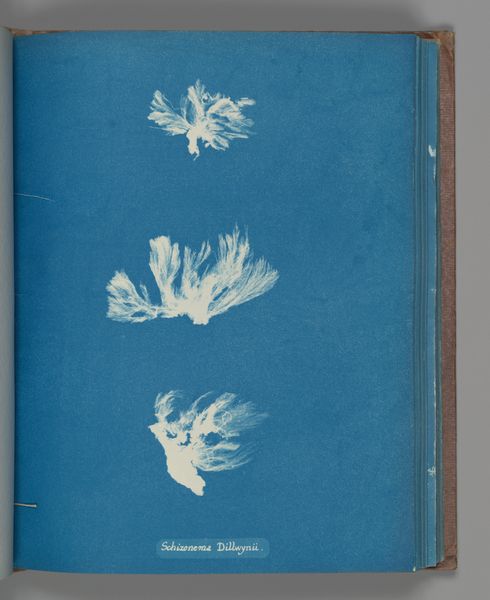
print, cyanotype, photography
#
still-life-photography
# print
#
cyanotype
#
photography
#
line
Dimensions: Image: 25.3 x 20 cm (9 15/16 x 7 7/8 in.)
Copyright: Public Domain
Editor: Here we have Anna Atkins' "Schizonema helminthosum," created between 1851 and 1855. It's a cyanotype, so a type of print, a form of early photography, currently at the Metropolitan Museum of Art. I find it strikingly minimal. What's your read of this print, focusing on its visual components? Curator: Note how the arrangement of the alga specimens creates a deliberate visual rhythm. The varying sizes and placements – upper left, upper right, center, and lower center– establish a carefully calibrated equilibrium. How does the cyanotype process contribute to this dynamic? Editor: It accentuates the forms through contrast, right? The white against that vivid blue. Curator: Precisely. The stark contrast enhances the delicate linework of the algae, transforming them into abstract patterns. Observe how the lines vary in thickness and density. What does this variance achieve? Editor: I suppose it guides your eye around, creates texture even though it's flat. And maybe emphasizes the plant's structure itself? Curator: Yes. The interplay between positive and negative space is crucial. The forms are highlighted but it is more than simple representation; consider the negative space surrounding them, and how this activates the composition, creating a sense of depth despite the surface’s flatness. It operates almost as a field for these delicate white tendrils to interact with, resulting in a striking example of line and form. Editor: That’s interesting. I initially just saw a simple botanical print. Now, seeing how all the space activates, I perceive a much deeper complexity to the print's aesthetic intention. Curator: Indeed, and perhaps, its beauty resides within that careful visual order.
Comments
No comments
Be the first to comment and join the conversation on the ultimate creative platform.
